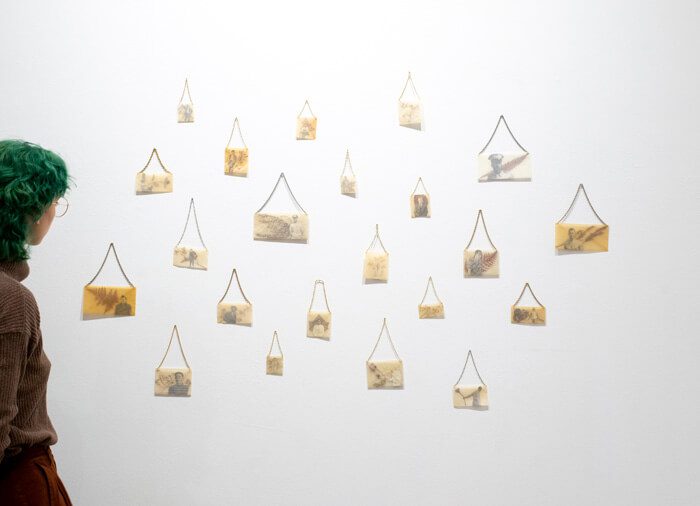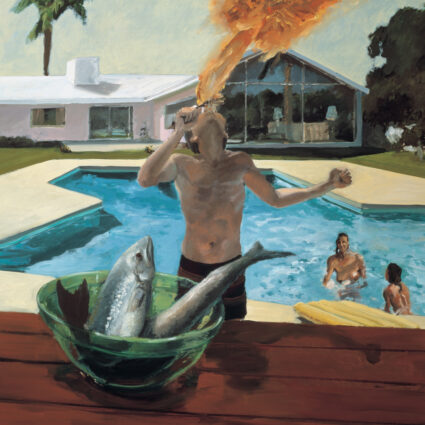Houston curator Suzanne Zeller uses their curatorial platform to promote underrepresented queer narratives in contemporary photography.
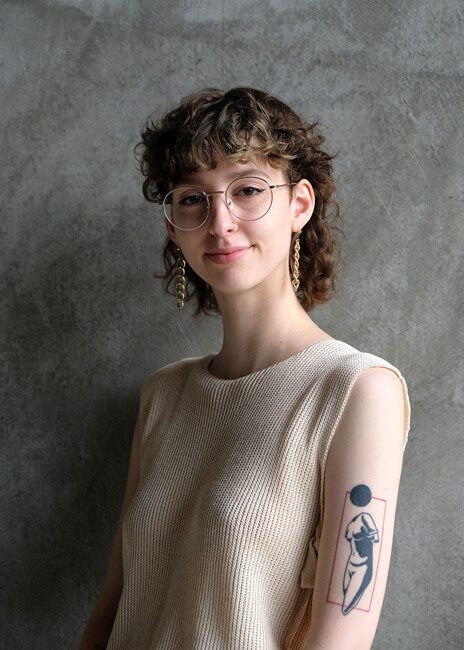
In their latest show, The Body as Memory at Foto Relevance, Houston, Texas-based curator Suzanne Zeller (who uses they/them pronouns) mounts works of photography that examine representations of queerness from the past, explore individuals’ present experiences, and project future means of writing queer and inclusive narratives. While all ingrained in photographic processes, the three artists selected for the show—Caleb Cole, Nick Simko, and Gabriel García Román—work in disparate media, including textiles, printmaking, and found objects.
“It’s a lot of work to develop an exhibition and find artists that fit the vision—it’s no small feat that the work ends up being very serendipitous together,” says Zeller. “These artists just ended up working so beautifully together, the way that their work spoke to each other. While the concept of the queer body was what I originally organized, the themes of history and memory came organically out of work in the show.”
The Body as Memory is Zeller’s first independent curatorial project, but previous experiences working with colleagues at Foto Relevance and throughout Houston on collaborative exhibitions have helped shape ideas regarding their current curating practice. At Rice University as an undergraduate, they became director of the student-led gallery (known as Matchbox, then as Inferno Gallery under Zeller’s tenure) and fell in love with the sense of belonging the gallery cultivated.
“It was a space to see art that felt intimate because it was such a small space,” they say. “I also really loved the community. We have a courtyard that everyone would spill out into because the gallery was so small. You’d look at the work, and then you’d go back outside to talk about it and let other people have their moment in the gallery.”
When Zeller became assistant director at Foto Relevance in July 2021, their primary curatorial concern became to create a similar community and amplify voices of queer and minority artists, they said. Another formative experience guiding their vision is their background as a fine arts photographer.
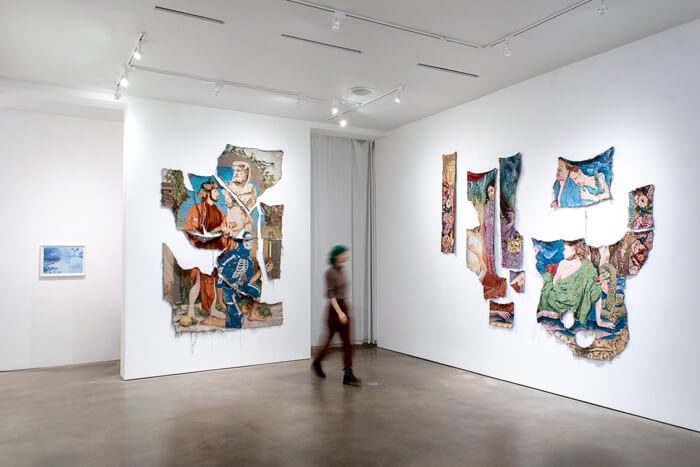
“I feel like it’s no secret that everyone has their own tastes as far as art goes,” they say. “There are similarities between the works that I gravitate to that I want to exhibit and the work that I create myself.”
The artists in The Body as Memory create works in an aesthetic language and media unlike anything Zeller has made, but they feel a kinship with the artists’ approaches to their work. “I have always been very interested both in the process of art-making and particularly interested in art history, historical roots, and references.”
Fragmentia, Nick Simko’s installation of tapestries on a computerized jacquard loom, includes fragmented and severed patches of textile, holes, and the gaps of missing pieces. The absence of these sections mirrors absences in the queer historical record.
“I’ve never created anything like these tapestries… but I feel that they’re also rooted in a similar place to where I work,” says Zeller.
Two other series in this exhibition, Traces and Purses by Caleb Cole, also engage with history and memory. Traces features a selection of manipulated, secondhand ’80s and ’90s gay porn magazine pages with the models removed. Cole replaces the models with pasted patches of the backdrop and accessories in the original image—the torn bodies from the pages offer a visualization of the people who would be queer elders to millennials and subsequent generations, says Zeller. “Caleb and I have had less experience talking to queer elders, and one reason is because of lot of them did not survive, whether it was from the [HIV/AIDS] epidemic or not being accepted, supported.”
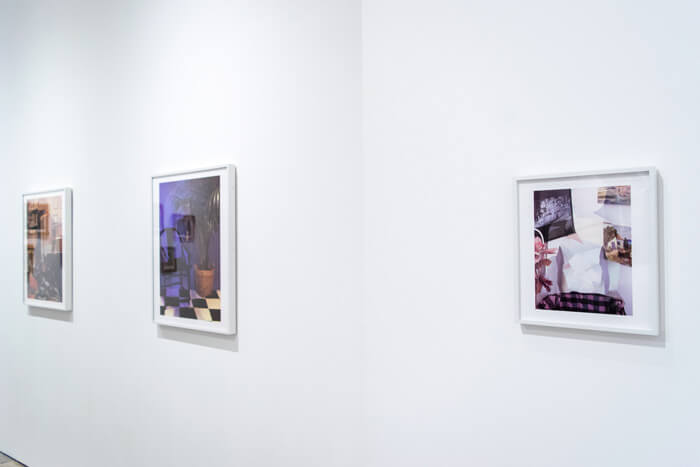
A wall of portraits by Gabriel García Román turns attention to friends and other members of his present community, navigating what it means to be queer in the 21st century. Queer Icons transforms images of loved ones into saints, where patterned and sparkling halos crown the sitters’ heads. Román constructs custom wooden frames to encase the portraits and incorporates metallic elements in the subject’s clothing, background, and overlaid text that records the sitters’ living queer experiences.
“Something about queer identity is even if you’re doing work that’s personal to your subjective experience, it’s still relatable to that community,” says Zeller. “None of our experiences are entirely unique, and I love that I can curate personal work that also affects other people personally, that they can also experience in a very personal way.”
Zeller is in the planning stages for their next show, to be exhibited in the next year or so. In the meantime, they are enjoying the journey in shaping their curatorial vision.
“I’m young and still figuring things out—I’m having a very productive time of figuring things out,” they say. “I plan to continue to work with queerness because it’s my experience, and it’s something that I feel I have both a lot to say about and more to learn.”
The Body as Memory continues through March 19, 2022, at Foto Relevance, 4411 Montrose Boulevard, Suite C, in Houston, Texas.

